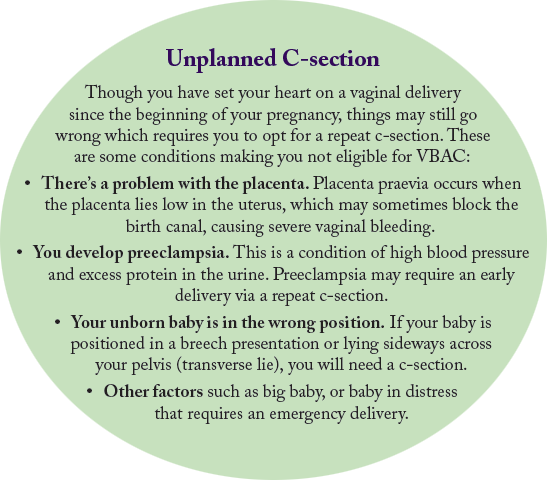In the past, women who had a caesarean section (c-section) delivery would have a caesarean for all future deliveries. Today, however, women are able to plan to go into labour (trial of labour) to deliver vaginally. This is called a VBAC (vaginal birth after caesarean).
It is safer and less risky for a trial of VBAC than a routine caesarean. Most doctors are likely to recommend a vaginal birth than a c-section, with the exception of special cases. Always consult your doctor before making any decision.

“Am I illegible for a VBAC?”
- If you have had one caesarean in the past, VBAC is generally safe.
- If you have had two or more caesareans in the past, VBAC is generally not recommended.
Risks Involved in VBAC
Pregnant women who have a caesarean scar as a result of previous c-section, have a slight risk of the scar on the uterus breaking open during labour. Known as a uterine rupture, this complication can be life-threatening. However, there’s only 1 to 2 percent chances of a uterine rupture with a VBAC on a singleton (studies have not shown for multiple pregnancies).
The Benefits of a VBAC
- Safer for you. You are less likely to get an infection and are also less likely to have serious blood loss or experience complications related to surgery.
- Earlier bonding with your newborn. If you have a successful VBAC, you may get to hold your baby sooner as compared to a repeat c-section. You can also start to breastfeed your child right after.
- Fast recovery. Your stay in the hospital is likely to be shorter after a VBAC than a repeat c-section. Concurrently, your energy and stamina will also return more quickly.
- Less costly. A successful VBAC costs less than a planned repeat c-section. However, if an unplanned c-section takes place as a result of an unsuccessful VBAC, the cost can be more than a planned repeat c-section.



Comments